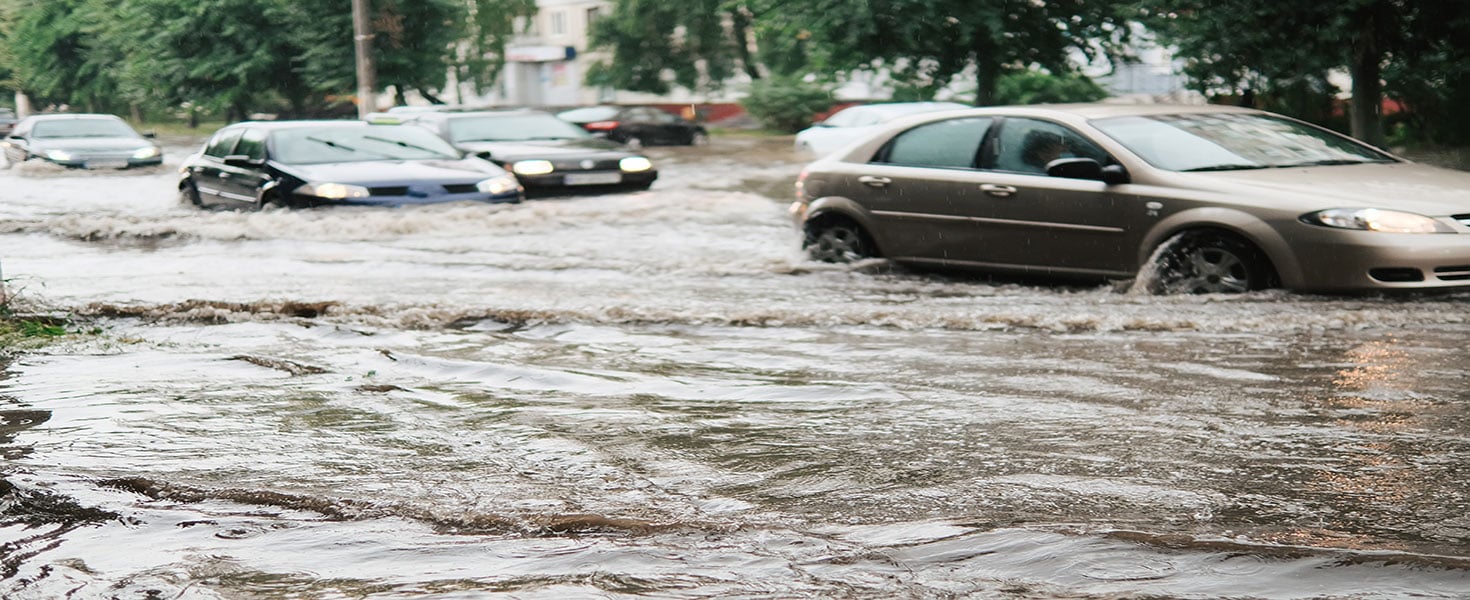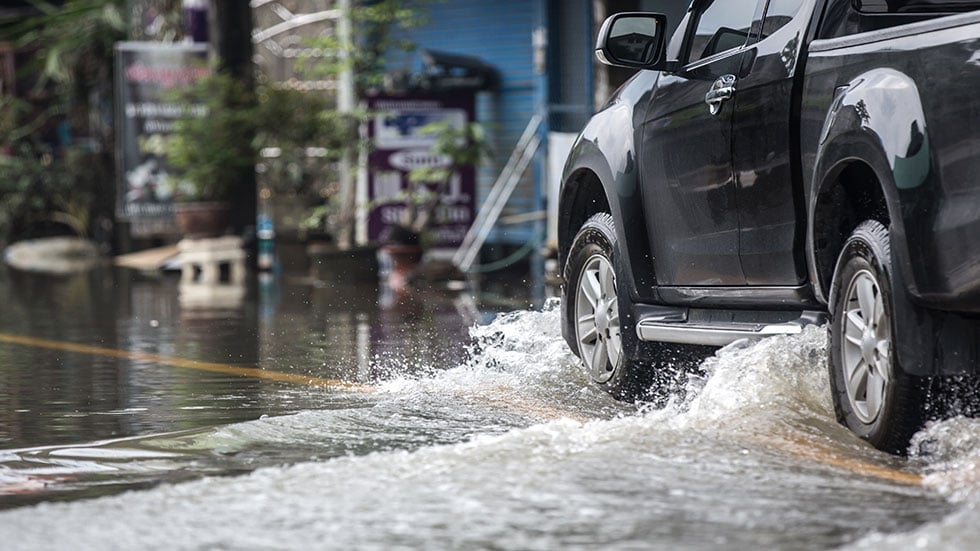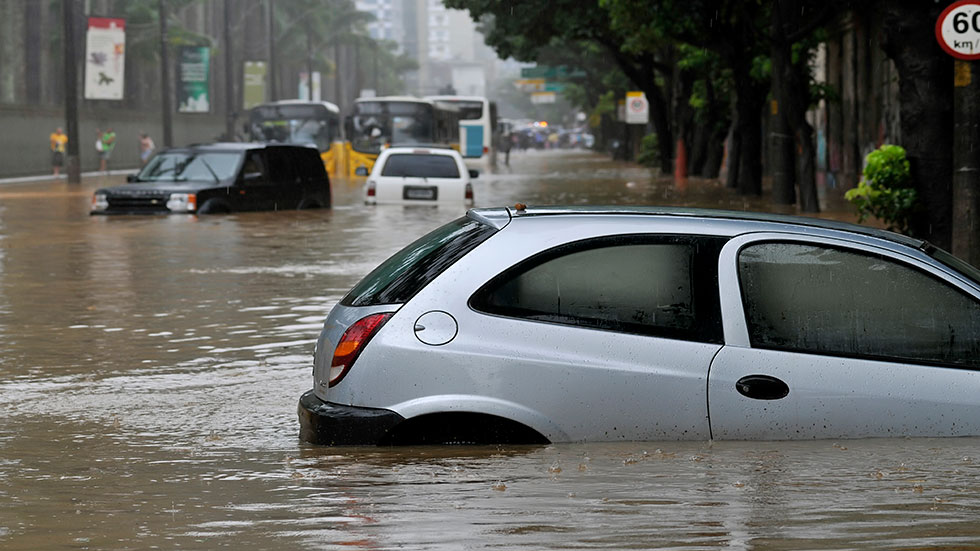6 STEPS TO GET YOUR FLOOD DAMAGED CAR FIXED
HOW TO AVOID FURTHER DAMAGE TO YOUR VEHICLE AND START THE REPAIR PROCESS QUICKLY


Finding your car submerged in floodwaters is a stressful and unfortunate situation that happens to hundreds of thousands of vehicles each year. Whether it’s due to a sudden storm, flash flood, or overflowing river, the aftermath can be overwhelming. Read on to learn more about the steps you should take if your car has been damaged by a flood.
1. ASSESS THE SITUATION
The first important step is to assess the situation as soon as it’s safe to do so. Check for immediate dangers before you attempt to approach your vehicle. If flood waters are still rising, do not enter the water. Be cautious of hidden hazards such as submerged debris and downed power lines.
2. CONTACT EMERGENCY SERVICES AND YOUR INSURANCE PROVIDER
Once you’re safe, contact emergency services to report the incident. Note that they may be receiving a lot of calls at once, so be patient and call the non-emergency line if possible. Also reach out to your insurance provider at this time to make them aware of the situation. You might wonder, “does car insurance cover flood damage?” Check your policy or ask your provider for details, like whether flood damage may be covered separately from other types of accidents.

3. DOCUMENT THE DAMAGE
Before moving your vehicle, document the damage. Take a variety of clear photos and videos from various angles to provide a comprehensive view of the flood damaged car. This evidence can be helpful when filing an insurance claim.
If possible, also capture the waterline on your vehicle to showcase the depth of the flood waters. Consider taking photos of the area surrounding your vehicle to give more context.
4. TOW YOUR VEHICLE TO A SAFE LOCATION
Do not try to start the car—this can cause further damage to the engine and electrical systems. Floodwater may have infiltrated critical components and attempting to start the engine could make it worse.
Instead, contact a professional towing service to transport your vehicle to a secure location. If possible, choose a reputable towing service that has experience handling flood damaged cars. Make sure to let them know of the extent of the water exposure so they can take appropriate precautions.
Once your car is in a safe location, remove all of your personal belongings to avoid mold and mildew growth and moisture damage.

5. CONTACT A MECHANIC FOR INSPECTION
Research and call a qualified mechanic to thoroughly assess the damage to your vehicle. Your insurance company may have recommendations or requirements for who to use, so check with them before booking an appointment. Keep in mind that flood damage can affect various components of your vehicle, including the engine, transmission, and electrical systems, so a professional inspection will help you better understand all necessary repairs and estimated costs.
6. WORK WITH YOUR INSURANCE AGENT
Collaborating closely with your insurance agent throughout the claims process will help everything go quickly and smoothly. Provide all necessary documentation as soon as possible, including photographs, inspection reports, and repair estimates. They will help you understand your coverage and the reimbursement process and be available for any questions that you have.
